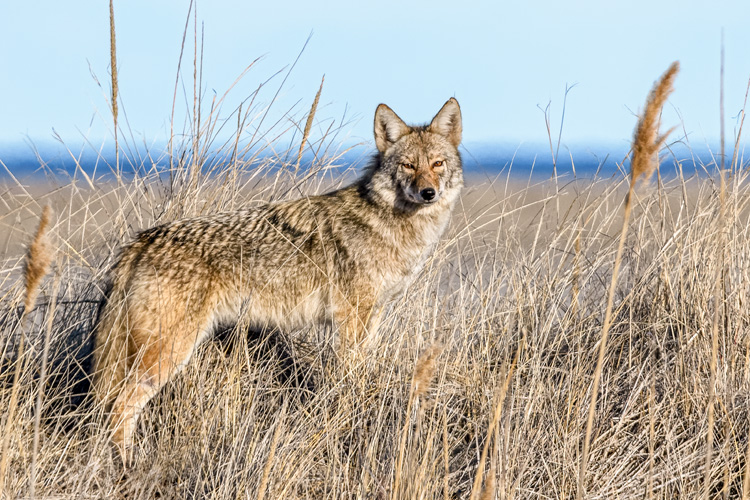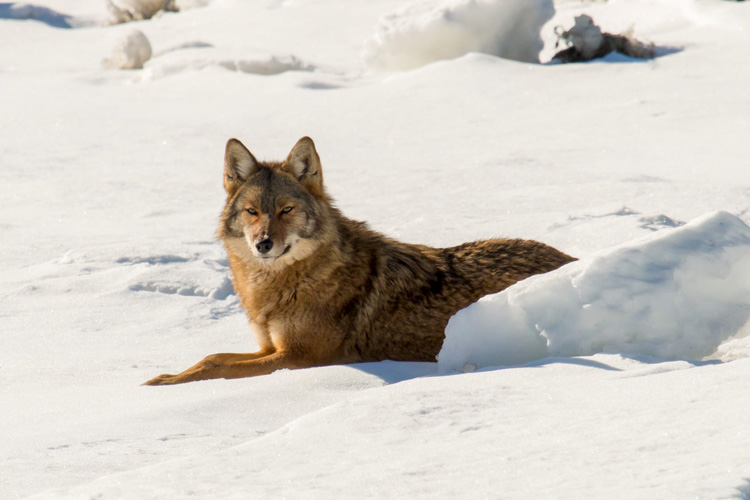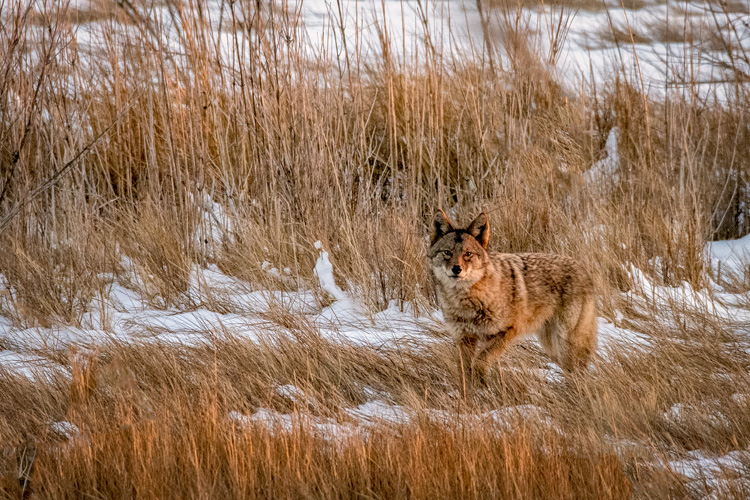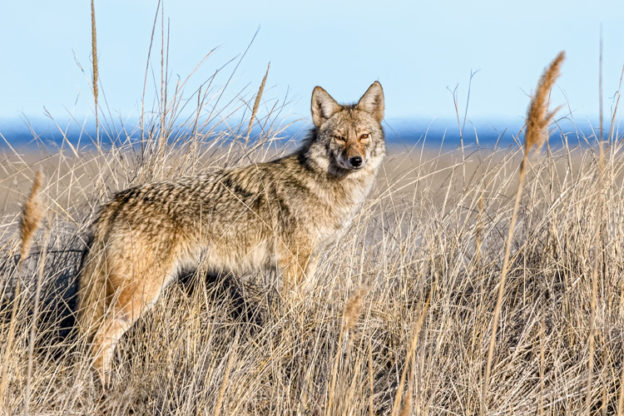February marks the beginning of the breeding season for coyotes in Massachusetts. Coyotes are resourceful, often misunderstood creatures who have successfully adapted to areas altered by people, meaning they are able to survive in the forests and fields of rural Massachusetts as well as the suburbs of Boston. As omnivores and opportunists, they’ll eat just about anything from mammals to insects to nuts to fruit, depending on the season and food availability. They are an important part of the food web, helping to control rodents and other pests as well as mitigating deer overpopulation that can ravage local ecosystems.
Sightings of eastern coyotes in suburbia can create concerns about peoples’ safety in their backyards, but coyotes are wary animals who will avoid people at all costs (except in very rare cases involving rabies infection, which can affect behavior). It’s important to keep things in perspective: Coyote attacks on humans are so rare in Massachusetts that during the last 60 years, there have been fewer than 15 confirmed attacks. A little common sense and a few simple precautions are all it takes to ensure you and your loved ones (including pets) stay safe:
- Never, ever approach or attempt to feed a coyote.
- Secure your garbage and pet food inside to prevent easy access.
- Keep your pets indoors and on a leash when outside.
- Should you encounter a coyote, retreat slowly and make lots of noise to scare it away.
- Although coyotes are susceptible to the rabies virus, it is still quite rare. If you notice a wild animal behaving strangely, contact your local police department. If you suspect you have been exposed to rabies, seek medical attention immediately.
Except in extremely rare instances, people have nothing to fear from coyotes. In fact, they should be celebrated for the role they play as a top predator in our local web of life. Here are five photos of coyotes from our annual Picture This: Your Great Outdoors photo contest to honor these handsome native canines.








Thank you! for a great article!
We have a resident coyote and he has a mate now, I see them on my trail cameras. And thanks to them, we dont have many rodents or other vermin in our neighborhood.
Our big Yellow Lab chased him once, have a picture of him bolting into the woods with his tail tucked under his butt.
We now keep her on a leash if its not daytime. We need our coyotes.
Never having been around coyotes, I wouldn’t know what “normal” behavior would be. Any pointers to info on this?
I recently saw what I’m pretty sure was a coyote behind a shopping mall in Medford so this is relevant to me.
Thank you for using one of my photos! I love observing coyotes. I live by the marsh and appreciate their rodent control!
It’s amazing to see how they virtually blend and disappear in the tall grass with their coloring.
Love Mass Audubon
Good article. We are in Scituate – 3rd Cliff – 2 years ago I saw a bobcat just down the road – in the Boston Globe article Scituate was not mentioned. Are they v. rare here? And just for your records, a fisher crossed the road at the Scituate Country club about 10 yds in front of me- about 8 years ago. Have not seen either animals since.
Bobcats are definitely uncommon but even more uncommon for us to see. They are primarily nocturnal, so you were really lucky to catch a glimpse!